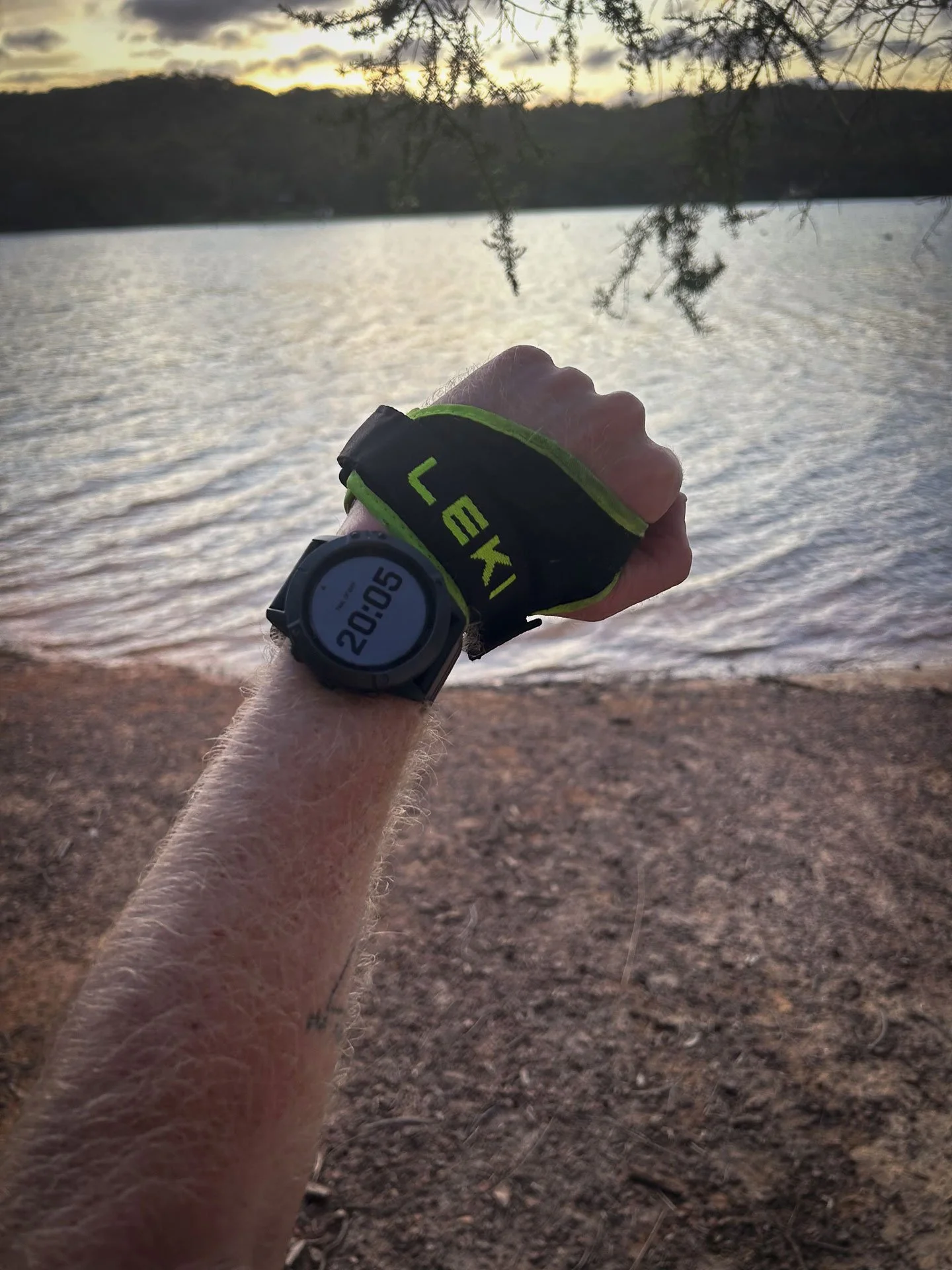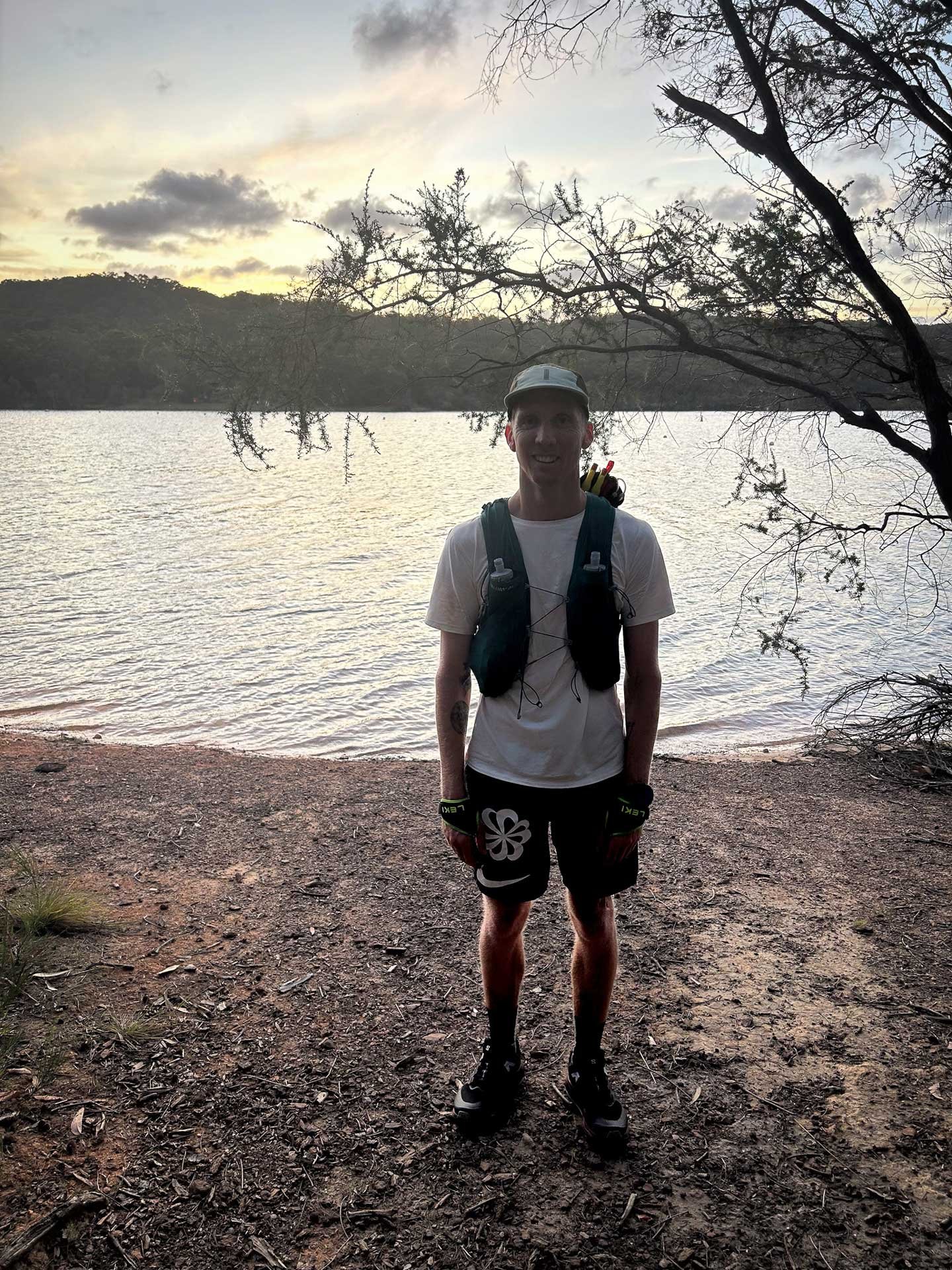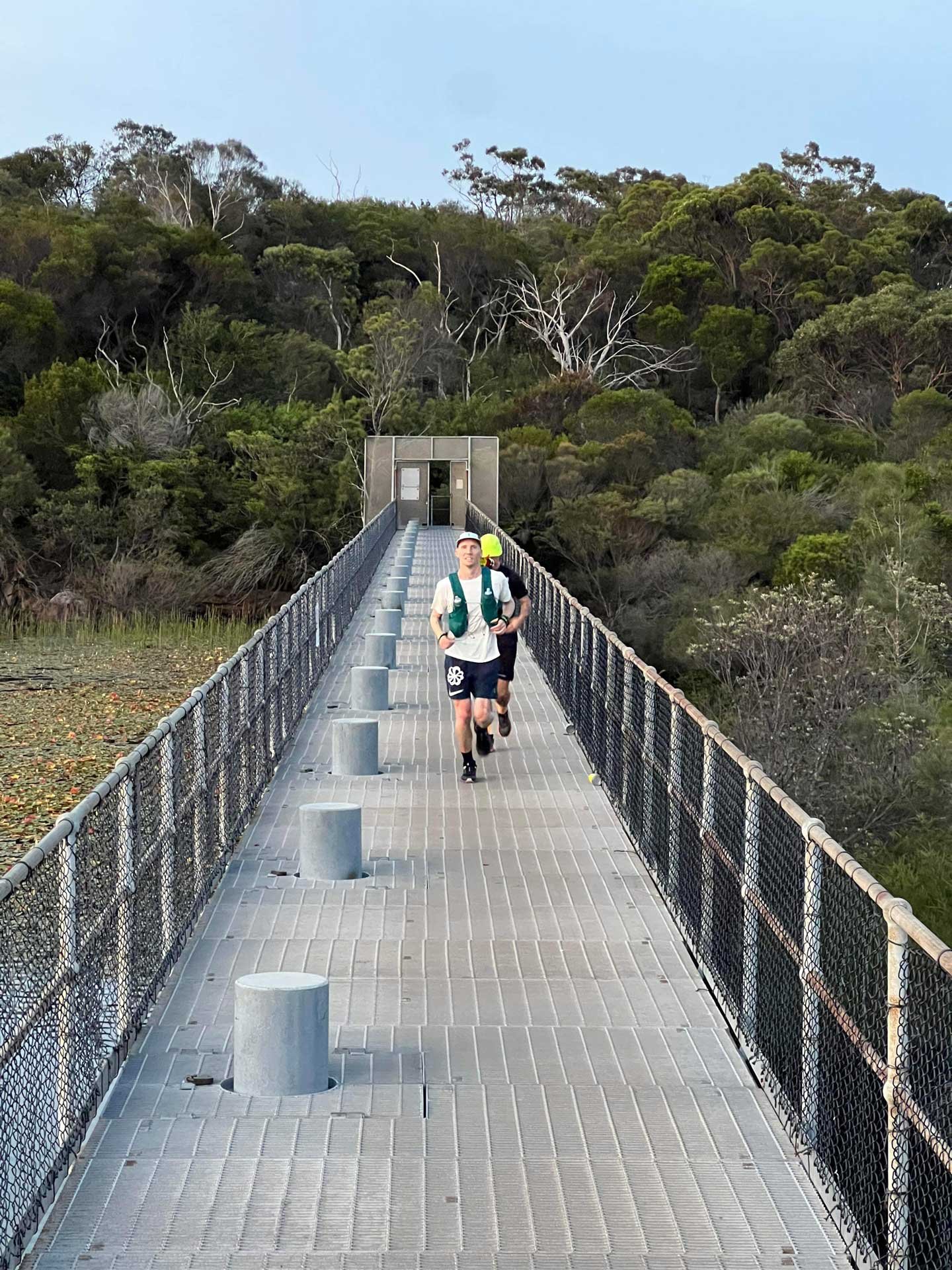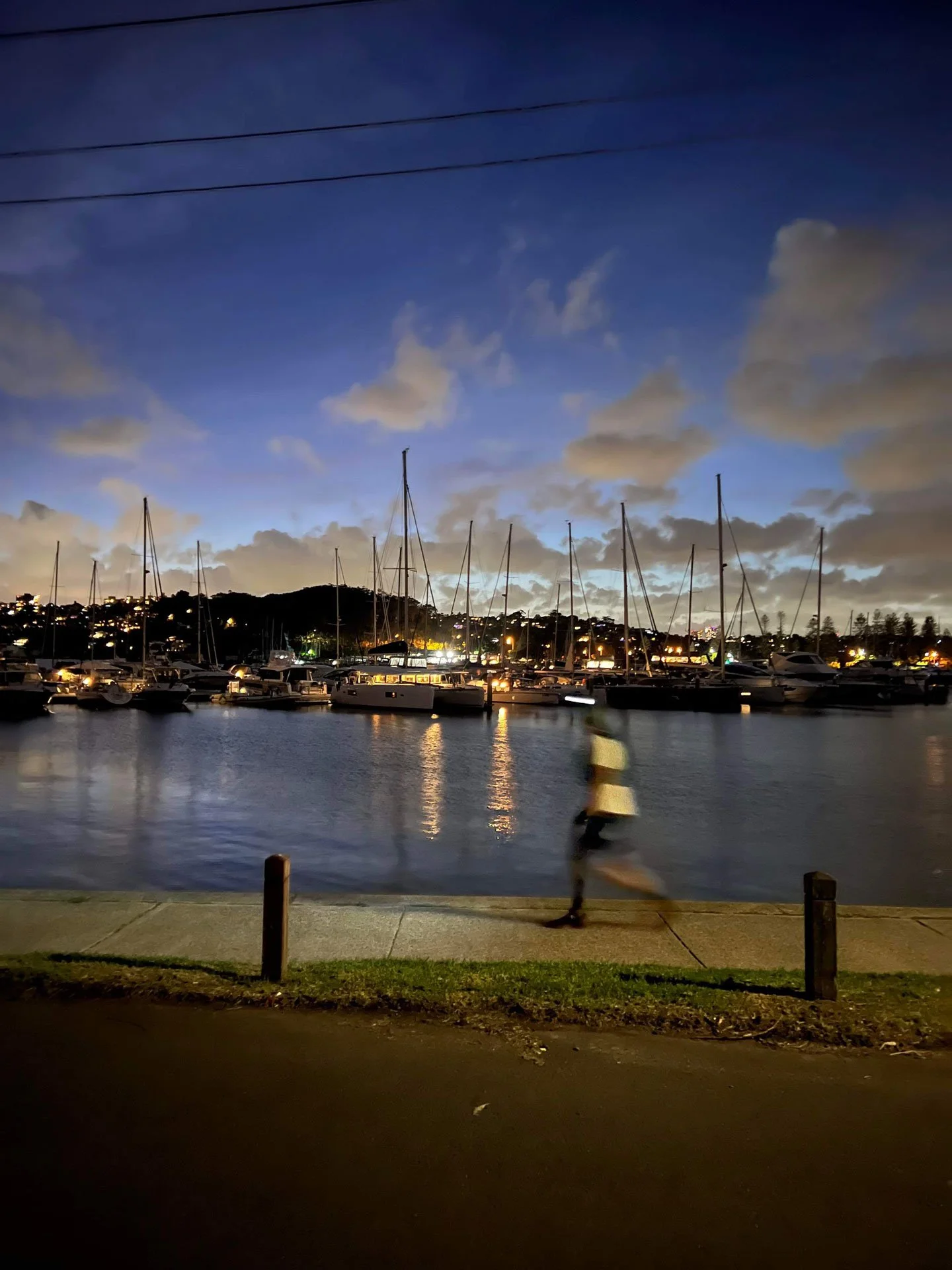Perfecting Failure
The edge of possibility is a unique terrain to explore. I found myself walking the line between success and failure multiple times as I ran 100km two weeks ago in a time of 16 hours and 9 minutes. A success by the measures of many metrics but a failure in the most important metric to me - Finishing before the sun sets.
The time I was aiming for, the duration between sunrise and sunset on the longest day of the year was 14 hours and 25 minutes which was always going to be a reach and I felt this in the weeks before the run. I questioned my ability, I questioned my preparation, I questioned my commitment. You can question all you like but you’ll never have an answer without going out there, giving it your all, and seeing where that lands you. I didn’t want this to be a recap my run by offering a play-by-play. But I did want to talk about how I’ve reflected on the run and what my ultimate failure means to me. With that being said, I still think it is worth taking you through a few of the highlights and lowlights I experienced out on the trail.
Let’s start with the highlights. It was beautiful! The Ku-ring-gai is a stunning piece of country to explore. Everything from the sandstone cliffs, to the leafy trails skirting the suburbs, to the still waterways that carve their way through the hills, I was consistently having my attention taken away from some of the lowlights I’ll speak of because of the sheer abundance of natural beauty along the Great North Walk. This is the third time I’ve passed many of these locations and I’m still in awe of how beautiful this place can be.
It’s nice to experience a lot of these places solo but another massive highlight was the company I had along the way. I was lucky enough to have someone to spend time with pretty much from 40km onwards. I always say I wouldn’t be able to complete these things alone and this time was no different. Whether it was the words of encouragement, the musical accompaniment, the consistent reminders to eat, or just knowing you had someone else to take your mind away from the challenge. Your support is what gets you there in the end and my support team is one I valued so highly along this journey.
The last highlight I’ll mention is the perspective this run has given me. I’ll talk more specifically about this later on but there’s something to be said for why I choose to do these things. I set out to challenge myself both physically and mentally but the overall goal of this is to grow as a human and that requirement has been well and truly satisfied as a result of reaching the finish line.
I’ll keep the lowlights brief because I don’t want them to come across as excuses that take away from the achievement itself. However, they will help me explain what I take from the result of this run when we talk about failure in general.
My condition was the first big lowlight for me. Not to say that I wasn’t conditioned but I ended up being sick the week before the run and the combination of tiredness, weakness and difficulty breathing certainly made me feel like I couldn’t fully appreciate the work I’d put into the training block in the months prior.
The feelings of nausea were also a factor to deal with when it comes to getting the right amount of food and fuel in as you run. I know the importance of fuel and have learned to make it a priority to be consistent with it. It’s one of the few things you can take control of in a pursuit like this but it’s hard to force yourself to eat when you’re teetering on the edge of throwing up for hours on end. You’re faced with a difficult question— Is it worth forcing that extra gel in? Especially when it may result in you throwing up all of the food you’ve ingested (plus more), leaving you with even less fuel than if you played it conservatively. It’s these questions that you have far too much time to think about the answers to which led me to skip some vital nutrition. This didn’t jeopardise my effort but it certainly did make it a little bit more difficult than it possibly could have been.
The last lowlight was the worst. It’s of course the cramps. I’ve dealt with cramps before. In fact, I wrote about them in detail when I did my wrap-up for the 50km race I did earlier in the year so I’ve always been weary of what it would be like to encounter them again. In short, they were even worse this time, hitting me in both quads, both calves and my left hip at one stage. Some brief fixes can get you back on track but when your first cramp comes to the surface at 35km into the run, you know it’s going to be a long, long, long day
Now, I’ve identified three things that I think are worth talking about based on some questions that I’ve been getting asked in the time that’s passed since the run. Did I truly give it my all from start to finish? How did it feel the moment I failed? And what does the failure mean to me? These questions also in a way help me summarise the year I’ve had which does make recounting my experience of dual significance.
The notion of not giving it your all when you’ve set such a lofty goal is something that never really occurred to me until a good friend of mine said “If there’s that bit of doubt, will it make you maybe not go as hard as you need to when the effort may be futile the whole time?”. The notion being - If the odds are stacked in favour of failure, have you already succumbed to losing even before you’ve started?
It’s a fair suggestion but one that never really crossed my mind because of my own fantasies of triumph. Despite how difficult this task was going to be, I’m someone who’s driven by that glimmer of hope. After all, it’s what my entire experience in overcoming the shark attack is headlined by.
But even the drive to succeed like this can have its downsides. From 5km into my run I was already picturing what it would be like to cross the finish line hours before my desired finish time, projecting these emotions and feelings of delight and success. The only problem was, I still had 95km remaining and all of the difficulties I outlined above to come. I made a pledge at that 5km mark to only concentrate on getting to the next checkpoint, to stay in the moment and to focus on the individual steps I needed to take to get me to the finish line.
There were many times throughout the run when my imagination wandered and I found myself thinking about that finish line but consistently had to drag myself back with the reminder that “we’re only getting to the next checkpoint”.
I think this was an important strategy and one that’s been a theme of 2023 for me. It’s easy to sit down at the start of the year and forecast where you want to be by December but to focus on the finish line is to skip over the predictable but valuable metaphor of the journey.
Throughout the year, breaking down and working towards individual goals has been such a solid, foundational process that I’ve learned a lot from. I knew taking the run checkpoint by checkpoint would be the best way to avoid unrealistic expectations and fears stopping me from doing my best in each stretch. The reality was that success or failure could only be determined either when I finished, or when the clock struck 8:05 pm, otherwise known as sunset.
But what was that feeling like? That feeling of failure.
The time is 7:55 pm, Jerred and I have just looped around the north side of Manly Dam and had received a message saying the dam bridge closes at 8:30 pm. This was the first time I’d considered any sort of time pressure the entire run. I did have an alternate route in case the bridge was closed but this whole process of acknowledging the time led to the first moment I’d realised I was actually going to fail.
I had about 8.5km left at that stage which clearly wasn’t going to be covered within the next 10 minutes. So there I was, feeling the door being shut on my goal for the very first time. It was a bit of a strange experience if I’m being honest. I mentioned to Jerred that I’d like to get a photo at the time of failure but that was really the only acknowledgment to be registered of what I thought was going to be a significant moment.
I didn’t feel upset, I didn’t feel angry, I didn’t feel hard done by. If anything, I felt a small sense of relief. This feeling that I set out to be confronted by was here and I was being forced to deal with it in real time. One of the most valuable things I’ve learned in life that I try to pass on to as many people as possible is that — It’s not about what happens to you, it’s about how you respond. And this was just another moment in life where I was being forced to respond in some sort of way to an adversity that was in front of me.
I will say, on the scale of adversity, that not achieving a time goal for a 100km run that you’ve personally chosen to undertake is fairly minor compared to some of the things that I and a lot of other people have been through. But still, it must be dealt with.
For me in that moment, the feeling of relief mixed with the pride of what I’d been able to do to get to that point is something that surprisingly lifted my spirits above the feeling of failure. It was almost like the weight of the goal had been lifted off my shoulders and I was finally free to enjoy the remainder of the run.
It could be argued that the next few kilometres I ran were some of the best of the day. I felt grateful and overwhelmed by this deep sense of accomplishment I had yet to understand through experiencing this failure. The only thing that could bring me down to earth were those damn cramps again…
Despite the high I’d experienced, getting through those final kilometres turned out to be a bit of a grind. It still upsets me that there are so many stairs in the final 2km of this course but I was happy to have both Jerred and Zac there with me to lead the way and take down all of the spiderwebs.
Crossing the finish line left me feeling both proud and empty. It wasn’t the feeling I’d fantasised about 95km earlier and there’s good reason for that. As I’ve well established by now, I’d failed. But the emptiness didn’t come from failure, it came from knowing I’d left it all out there on the trail and on this particular day, I did the best I could have.
Could I have done better? I believe so.
Despite my failure, I do think there is room to improve. The funny thing about trail running is that preparation can take care of a large percentage of how you’ll perform on the day but sometimes you have days when it all comes together and some days you don’t. I wouldn’t say it all went against me but on another day, I still believe I could have beaten the sun.
I really am the typical evergreen dreamer, aren’t I?
But what did I learn from this whole experience? What did I learn from failure? Where will this take me next?
I spoke a lot in the lead-up to the run about wanting to learn from failure and whilst I could have predicted its value, I was interested to see what I specifically had to take away from it. There are two main factors that I’ve come to learn:
1. Failure isn’t nearly as scary as it seems. I know this challenge of mine wasn’t life or death and I get the chance to attempt it again if I really want to. But that feeling of freedom in failure that I experienced teaches me that the consequences we create are often preconceived and created within our own minds.
Again, I must stress that my failure didn’t have any dire consequences in comparison to the failure to do something like successfully perform CPR (an extreme example, I know), or to pass an exam (that’s a little softer) but this is where my second lesson comes in with the help of Harvard Professor, Amy Edmonson.
2. Failure sits somewhere on a scale that you can view as either a spectrum or a continuum. On one end you have blameworthy failure (think self-sabotage), and on the other end, you have praiseworthy failure (experimentation with good intentions and preparation, but without the result). In the middle, you have other categories such as inattention, inability, task challenge and uncertainty. The reason I bring these up is because when you combine lessons 1 and 2, you get a pretty interesting result.
If failure is to be embraced rather than feared, it allows us to know with certainty what our limits are and where our limiting beliefs prevent us from reaching whatever potential we may have within ourselves. And when we try, and when we inevitably fail, we have the opportunity to reference this continuum I mentioned above and assess what type of failure we experienced. With that information, we can decide to change our approach so that next time we increase the likelihood of success.
The more reps you have, the more you learn, the better you get. It sounds pretty straightforward but the realisation that all failure is not created equal, and the ability to categorise and assess failure on its own merit is what my biggest takeaway is.
In my case, I would place the failure of beating the sun somewhere around the “Task Challenge” or “Uncertainty” range on the continuum. I am still relatively new to this whole ultra running scene and the prospect of achieving this may be possible with more time to train, more knowledge, and ultimately more experience doing things like this. The “Uncertainty” side of things I’d use to explain the good and bad days you have out on the trails, it’s hard to predict when, but there will be a day when it all comes together.
Will I try it again? I’d certainly like to. It was a hell of a lot of fun to try something like this and I feel like it’s a book that needs to be finished one day. But there’s a good chance that won’t be next year.
Over the past year, I have put a ton of time and effort into my running and for good reason. I’ve had a lot of lofty goals which have been fun to chase down and in the process I have developed a real love for the sport. Whilst the successes and failures have varied, the one constant has always been asking myself “What’s next?”, and always planning my next challenge before I’ve finished the current one.
I will always maintain this enthusiasm for chasing the next goal (and I do have a few lined up) but it has often come at the expense of looking back, realising, and being grateful for how far I’ve come. When I look at it objectively, I’ve come such a long way from someone whose previous best 100km time was 25 hours and 19 minutes. I just did a personal best and improved that time by 9 hours and 10 minutes. That’s huge, and I can only look at the hard work I’ve put into running as the reason for these incredible improvements.
This leads me to my biggest tangible takeaway that I’ll be implementing in 2024.
I’ve calculated the time I put into running over the past 12 months and on average I’ve been putting in approximately 5 hours per week. Seeing the improvements I’ve made and the results I’ve achieved due to that amount of dedication has got me thinking and I’m interested to see what happens if I reallocate that time to a different pursuit.
This won’t mean I’m giving up running by any means. But I will be spending a little less time out on the trails as I put those 5 hours per week into my French.
Mon Dieu!! Mais pourquoi??
This may seem like a bit of a change of pace and a completely different challenge but it’s one that arguably brings more fear and intimidation than I would experience if I tried this 100km challenge again or went for something bigger and longer.
I’ve dipped in and out of learning the language ever since my sister moved to France nearly a decade ago. But the motivation now comes from wanting to become closer with my wife’s family who, as luck would have it are French-Canadian. It’s one thing to want to improve those relationships but being ambitious and goal-oriented, I’ve set myself a goal of wanting to deliver my keynote to a French-speaking audience, in French.
I’m not naïve to the point of thinking this will happen just because of one year of dedicated practice and study but it’s all about those small steps and getting from checkpoint to checkpoint.
I often have to remind myself of why I undertake these challenges. In fact, this is the second time I’ve done it in this article, but it’s something worth sharing to finish up. There is a personal angle that is important to me. I like to challenge myself, I like having direction, purpose and meaning in my life and these goals help keep me on track so I’m making the most of the time I have here on this planet.
But what means the most is when I receive messages from someone who’s followed my story and has seen the things I’ve done which has helped them reconsider their own limits, push themselves a little further, and aim a little higher with their own goals and aspirations.
So hopefully my failure will help pave the way for others to overcome the fears that so often prevent them from being ambitious and doing the things that would really make them proud. It’s a new year and as you sit down to plan what you want to achieve, take a moment to think about me, my cramps and what can be learned when you confront failure, rather than avoiding it.
As my physiotherapist always said, “People fail not from aiming too high and missing, but from aiming too low and hitting. Look ahead with determination and set lofty goals”.
All the best for 2024.








